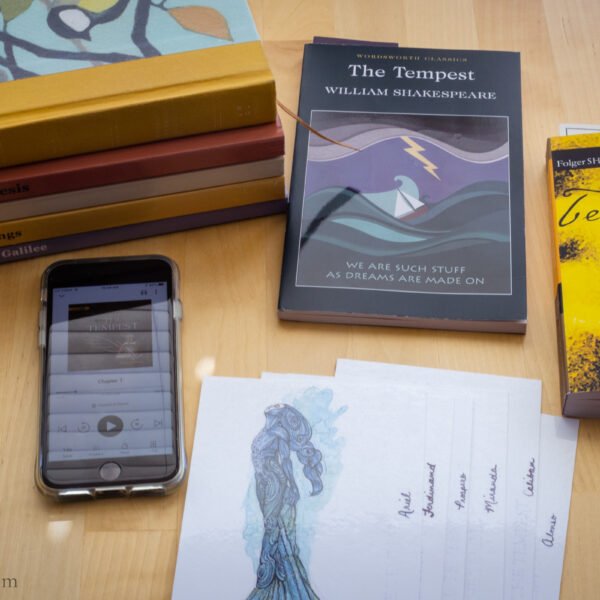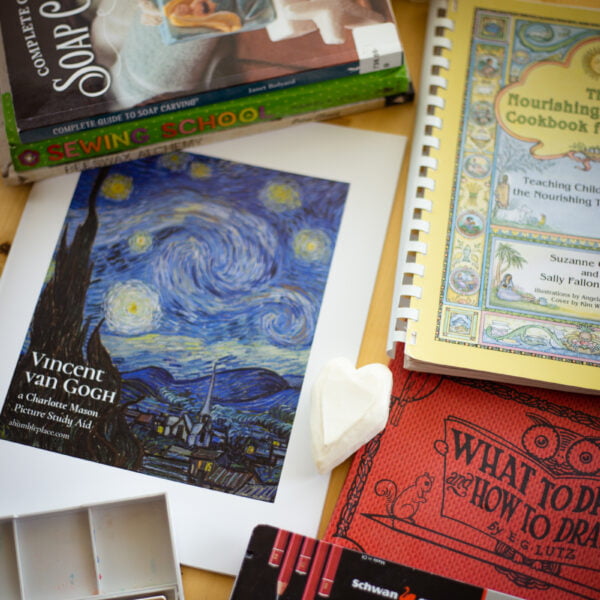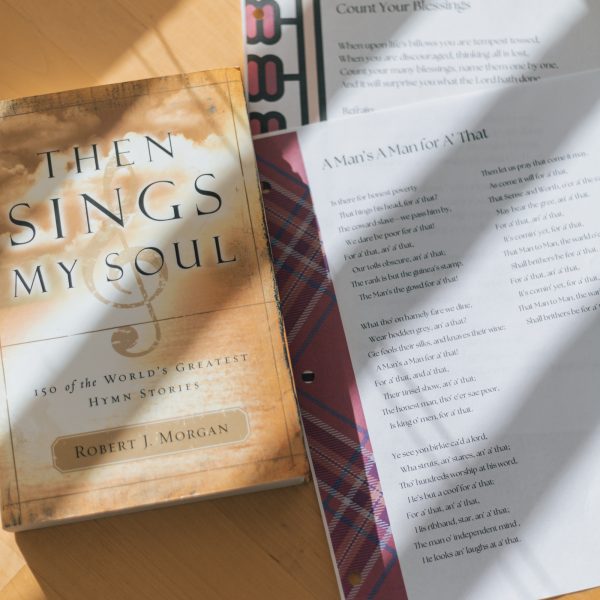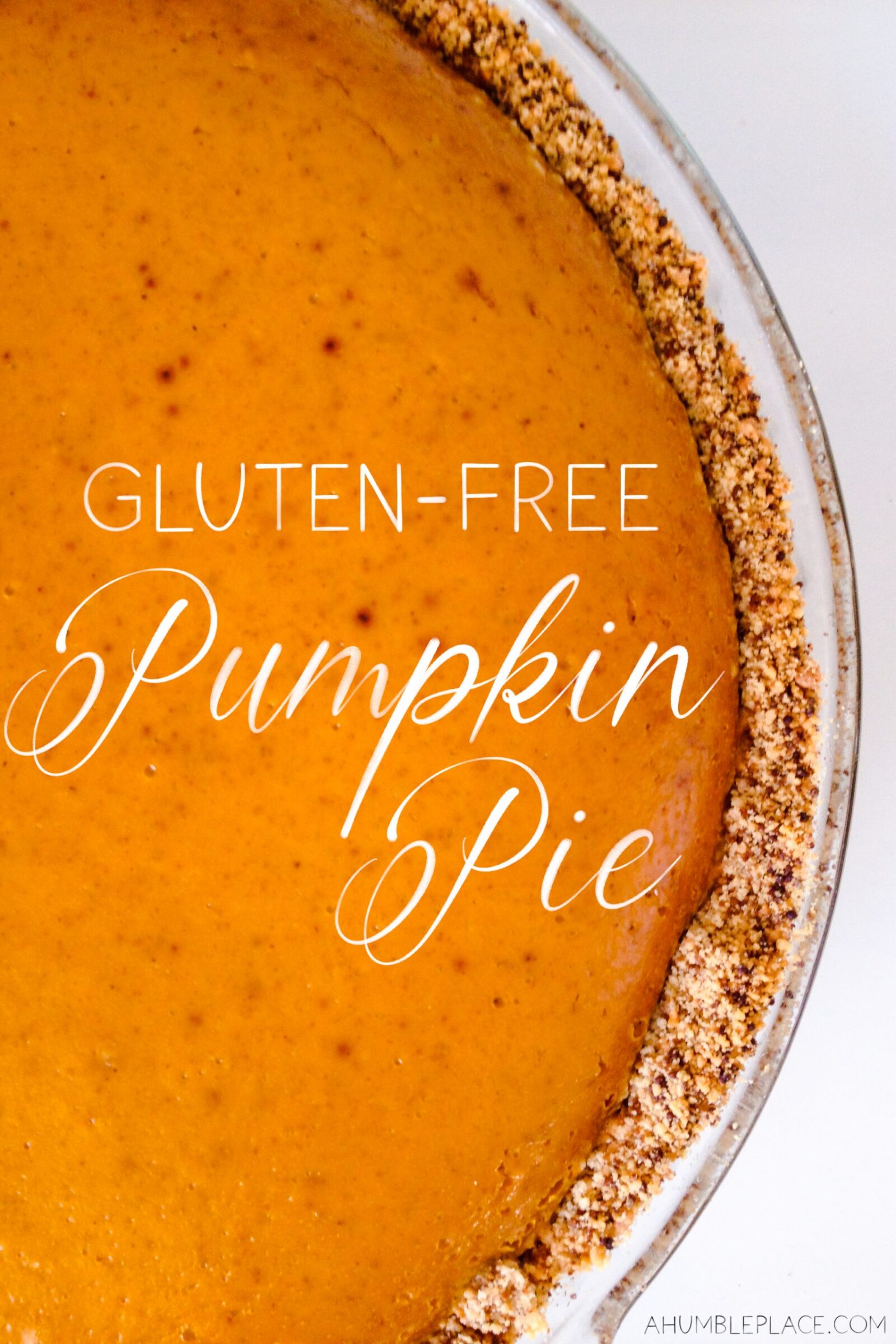My Favorite Resources for Charlotte Mason Geography and Math

In April, I introduced a series of blog posts that I plan to go through over the next few months, sharing some of my favorite Charlotte Mason home school resources broken down by subject. These are the ones we’ve tried and have been so helpful in making our days run more smoothly. They have also engaged my kids in whatever subject we’re covering. In some cases, they’re resources that have been made by other homeschooling moms or are from reputable homeschooling companies, and sometimes they’re just different items that have been helpful to us in a specific subject.
These are by no means the only resources out there, and I will offer others in some subjects that I have heard of but haven’t had the chance to try yet, or I have friends who have used them and appreciate them. But the main list will be the resources we’ve used in our homeschool over the last (almost!) six years that have been so helpful to us.
Today I’m sharing resources for Geography and Math! As with my other posts in this series, these are two subjects, especially geography as part of a Charlotte Mason education, that look very different than what I experienced in my elementary school days, but I definitely consider this a good thing! Through our simple geography lessons done in the Charlotte Mason way, my kids have learned the rudimentary notions of geography at young ages, including their local geography, how the sun rises and sets, cold and hot countries, how the changing seasons happen, various topographical features of the earth, geographical terminology, and more.
Charlotte Mason Geography
But the mother, who knows better, will find a hundred opportunities to teach geography by the way: a duck-pond is a lake or an inland sea; any brooklet will serve to illustrate the great rivers of the world; a hillock grows into a mountain––an Alpine system; a hazel-copse suggests the mighty forests of the Amazon; a reedy swamp, the rice-fields of China; a meadow, the boundless prairies of the West; the pretty purple flowers of the common mallow is a text whereon to hang the cotton fields of the Southern States: indeed, the whole field of pictorial geography––maps may wait until by-and-by––may be covered in this way.CHARLOTTE MASON (HOME EDUCATION)
Give him next intimate knowledge, with the fullest details, of any country or region of the world, any county or district of his own country. It is not necessary that he should learn at this stage what is called the ‘geography’ of the countries of Europe, the continents of the world––mere strings of names for the most part: he may learn these, but it is tolerably certain that he will not remember them. But let him be at home in any single region; let him see, with the mind’s eye, the people at their work and at their play, the flowers and fruits in their seasons, the beasts, each in its habitat; and let him see all sympathetically, that is, let him follow the adventures of a traveller; and he knows more, is better furnished with ideas, than if he had learnt all the names on all the maps. The ‘way’ of this kind of teaching is very simple and obvious; read to him, or read for him, that is, read bit by bit, and tell as you read, Hartwig’s Tropical World, the same author’s Polar World, Livingstone’s missionary travels, Mrs. Bishop’s Unbeaten Tracks in Japan––in fact, any interesting, well-written book of travel. It may be necessary to leave out a good deal, but every illustrative anecdote, every bit of description, is so much towards the child’s education. Here, as elsewhere, the question is, not how many things does he know, but how much does he know about each thing.
Maps.––Maps must be carefully used in this type of work,––a sketch-map following the traveller’s progress, to be compared finally with a complete map of the region; and the teacher will exact a description of such and such a town, and such and such a district, marked on the map, by way of testing and confirming the child’s exact knowledge. In this way, too, he gets intelligent notions of physical geography; in the course of his readings he falls in with a description of a volcano, a glacier, a cañon, a hurricane; he hears all about, and asks and learns the how and the why, of such phenomena at the moment when his interest is excited. In other words, he learns as his elders elect to learn for themselves, though they rarely allow the children to tread in paths so pleasant.CHARLOTTE MASON (HOME EDUCATION)
Resources
Free Printable Charlotte Mason’s Elementary Geography (original post here – this used in AmblesideOnline Years 1-6)
Home Geography for Primary Grades by C. C. Long on Archive (this is used in AmblesideOnline Years 1-6)
Holling C. Holling Maps
Seterra Map Printables
United States and World Maps
Globe
Articles
Conversations with Maps
What Geography Looks Like
I think my favorite part about the study of geography is that it permeates nearly every subject we cover, especially historical events, through the use of maps. When we read Marco Polo’s record of his travels through Asia, we kept track of his progress on a world map. When we learned about all of the different battles taking place throughout England and France in Our Island Story, I kept a map of the British Isles on our school table. Later, when we followed explorers west across the “Sea of Darkness” from Europe, we looked at each of the places they landed in South and North America on our globe. We also did map work and recorded the progress of westward expansion and the locations of different battles during the American Civil War.
The same is often true in literature, and so many of our stories have had us pulling out the same maps to see the setting for our current literary adventure. In this way, even before we began doing map drills in Year 4, my son had already been exposed to distant (and not so distant!) locations and cultures and the physical characteristics of their area.
For a more detailed understanding of how to do a geography lesson, I recommend the post I linked to above called “Conversations with Maps” by Nancy Kelly. This is how geography (and more specifically, map drills) was modeled for me by a seasoned Charlotte Mason mom at my first Charlotte Mason retreat back in 2017. I tucked that immersion using Halliburton’s book into the back of my mind and was so excited to be able to begin using it in 2020.
I specifically linked to a few resources above that have been very helpful for us in geography. For my Form I elementary-aged students, we didn’t do map drills, but because we used the Holling C. Holling books in Years 1 through 3, I did use the giant maps from Beautiful Feet Books to go along with those books. I simply had my students color them while I was reading (pausing when they narrated), and then we would label where our reading had taken us that day. This is also a fun way of recording those readings, and I have each of these maps hanging on a wall in the kids’ area of the basement.
Now that my kids are older, I do include a map drill after a reading lesson following the outline linked above on Nancy Kelly’s site. The Seterra maps are handy for this, and I have printed out a filled map and a blank map as we’ve traveled along with Richard Halliburton this year.
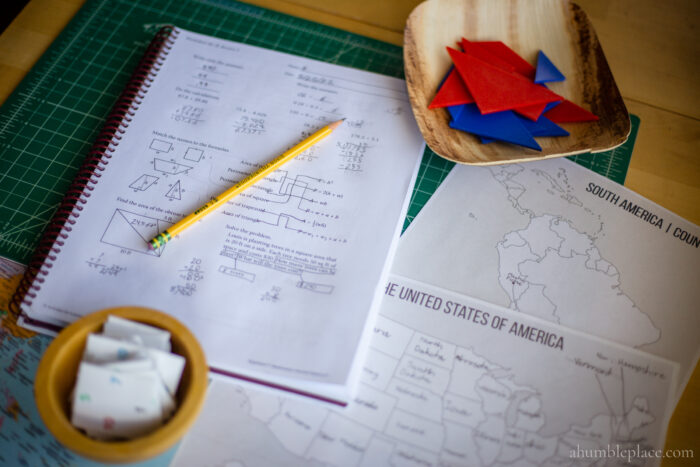
Math
Of all his early studies, perhaps none is more important to the child as a means of education than that of arithmetic. That he should do sums is of comparatively small importance; but the use of those functions which ‘summing’ calls into play is a great part of education so much so, that the advocates of mathematics and of language as instruments of education have, until recently, divided the field pretty equally between them.
The practical value of arithmetic to persons in every class of life goes without remark. But the use of the study in practical life is the least of its uses. The chief value of arithmetic, like that of the higher mathematics, lies in the training it affords the reasoning powers, and in the habits of insight, readiness, accuracy, intellectual truthfulness it engenders. There is no one subject in which good teaching effects more, as there is none in which slovenly teaching has more mischievous results. Multiplication does not produce the ‘right answer,’ so the boy tries division; that again fails, but subtraction may get him out of the bog. There is no must be to him; he does not see that one process, and one process only, can give the required result. Now, a child who does not know what rule to apply to a simple problem within his grasp, has been ill taught from the first, although he may produce slatefuls of quite right sums in multiplication or long division.CHARLOTTE MASON (HOME EDUCATION)
Resources
RightStart Math
The Charlotte Mason Elementary Arithmetic Series
MEP Reception
AmblesideOnline Recommendations for Math Curricula
Articles
Math Resource Articles by Richele Baburina at Charlotte Mason Poetry (also the author of the Elementary Arithmetic series linked above)
I was not a good math student in school. Particularly in my elementary years, I very distinctly remember all of the kids in my grade being divided into three different groups for math: advanced, “average” (this probably was not what the class was called, but it was the basic idea of the level of the students ?), and remedial. I could usually be found in the remedial classroom. Even into high school, by a weird twist of fate (and moving in the middle of the freshman year to a different state), I skipped geometry but later had to take trigonometry to make up for the missing credit. The only reason I just barely passed the class with a D is that I did all of the extra credit I possibly could and my teacher opted to honor my resolve rather than my mathematical prowess. In college, because I majored in art, I only had to take one college algebra class, for which I was genuinely thankful.
With that in mind, thinking about teaching math was somewhat intimidating to me when I first began exploring homeschooling options. I often leaned back on the idea that if it didn’t work out for me to do it, my husband, a chemical engineer by education, could always fill in that role. Happily, that hasn’t been necessary, and math has actually been one of the parts of our mornings that I like best.
I started both of my kids in MEP Reception for their kindergarten year, and then we moved on to RightStart Level B. This curriculum was recommended by a friend who I knew was more mathematically inclined than I was, and I liked that everything was scripted. So, with more than a bit of trepidation, I handed over a hefty amount of money to get the curriculum and their entire math set. That initial investment has ended up being entirely worth it, as I have used every single one of those manipulatives with each of my kids. I also take advantage of their Cyber Monday sales (I share these in my Black Friday posts) or set up a search on eBay for the worksheets and/or lessons that I’ll need for the following school year, and that has saved me quite a bit of money as well.
When we started homeschooling, I did not know about Richele Baburina’s Charlotte Mason Arithmetic series that I also linked above. I have no regrets about using RightStart, but if I had known about her books, or even if I hadn’t paid so much on the initial investment for RightStart, I probably would’ve gone with her books instead.
A key thing that I like to keep in mind for math specifically is sticking to “short lessons.” This wasn’t the case when we first started homeschooling, and I would force us through an entire math lesson even if it took an hour. I mentioned this to a Charlotte Mason homeschooling friend who also used to be an elementary school teacher and uses RightStart with her kids, and she said she always stops at that 20- (for Form I) or 30-minute (for Form II) mark even if it means they don’t finish the lesson. When I started doing this, it made a huge difference in our days, both in how long they last and in the attitudes of my kids, and though it does mean that we make up the extra lessons during the summer, the improvement was entirely worth it.
So this covers our favorite resources for geography and math! What would you add to this list?
In my next post in this series, I’ll be sharing our favorite resources for nature and science! If you’re not signed up for my newsletter, click here to get a notification when the new post is available!
Other Posts in the Series:





